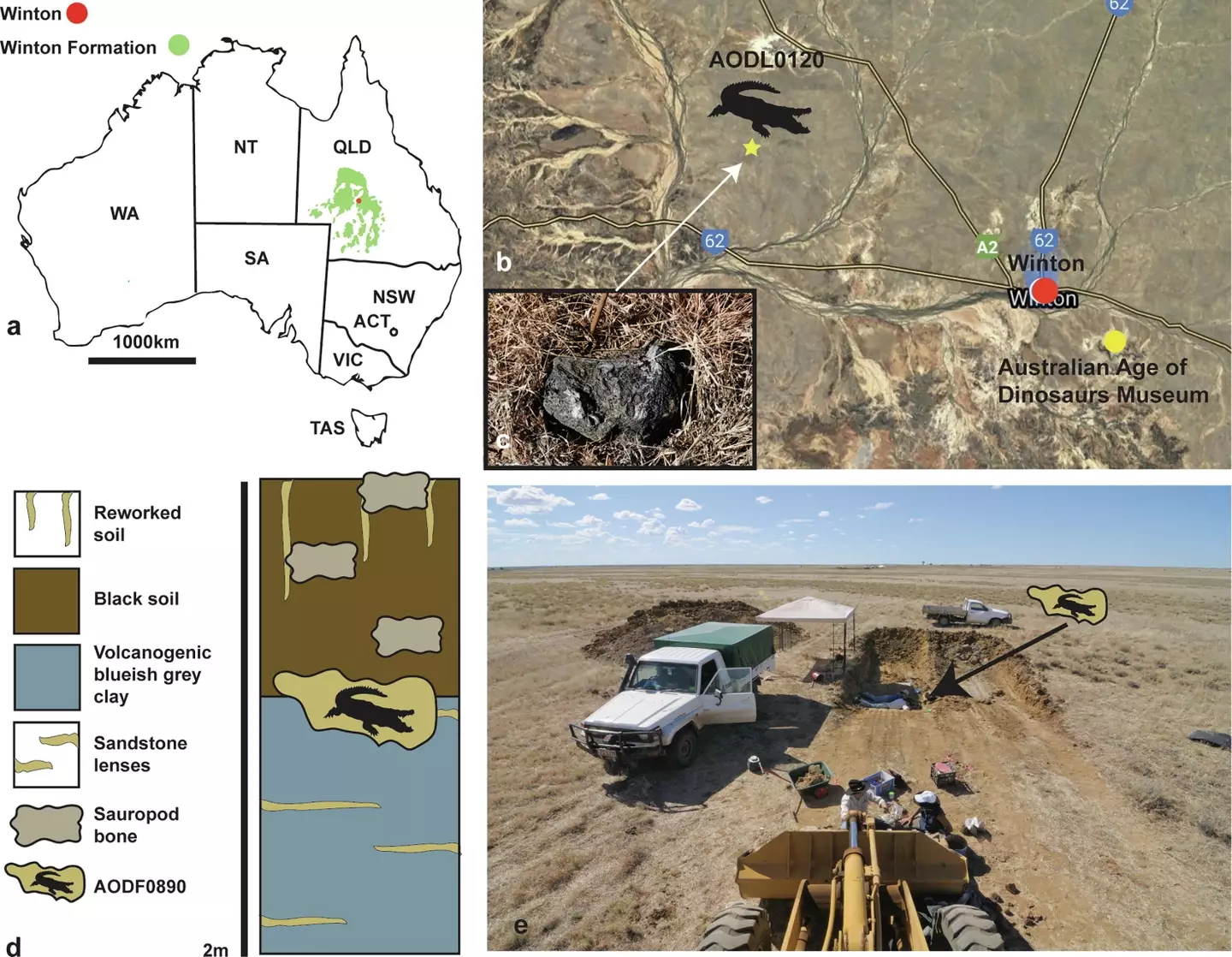
Scientists have discovered that a 93-million-year-old crocodile had eaten a baby dinosaur shortly before its death, having used nuclear techniques to scan the fossilised stomach contents.
The crocodile’s remains were found inside a large boulder in Central Queensland, Australia, back in 2010.
Now a team from the Australian Age of Dinosaurs Museum and the University of New England have used advanced nuclear and synchrotron imaging to confirm that the hungry croc had eaten a juvenile dinosaur before it died, having published their findings in the journal Godwana Research.

Advert
The crocodile has been named Confractosuchus sauroktonos, which translates as ‘the broken crocodile dinosaur killer’, and measured about 2-2.5m in length. The ‘broken’ part of its name refers to the fact that it was discovered in a huge, shattered boulder.
Senior Instrument Scientist Dr Joseph Bevitt, co-author of the study, said: “The fossilised remains were found in a large boulder. Concretions often form when organic matter, or say a crocodile, sinks to the bottom of a river.
"Because the environment is rich in minerals, within days the mud around the organism can solidify and harden because the presence of bacteria."
According to a press release from the Australian Nuclear Science and Technology Organisation (ANSTO), early neutron imaging scans of one rock fragment from the boulder detected bones of the small chicken-sized juvenile dinosaur in the gut, an ornithopod that has not yet been formally identified by species.

Advert
The dinosaur bones were embedded within the dense ironstone rock, and were ‘serendipitously discovered’ when the sample was ‘exposed to the penetrative power of neutrons’.
Bevitt said: “In the initial scan in 2015, I spotted a buried bone in there that looked like a chicken bone with a hook on it and thought straight away that it was a dinosaur.
“Human eyes had never seen it previously, as it was, and still is, totally encased in rock.”
The finding led to further hi-res scans using Dingo - Australia’s only neutron imaging instrument, which can be used to produce 2D and 3D images of a solid object and reveal concealed features within it – and the synchrotron X-ray Imaging and Medical Beamline.

Advert
“3D digital scans from the Imaging and Medical Beamline guided the physical preparation of the crocodile, which was impossible without knowing precisely where the bones were,” Bevitt said, before adding: “The results were outstanding in providing an entire picture of the crocodile and its last meal, a partially digested juvenile dinosaur.”
To confirm the dinosaur was, indeed, in the crocodile’s gut, the team observed ‘infilled worm tunnels, plant roots and geological features that extended between rock fragments’.
Bevitt said: “The chemistry of rock provided the evidence."
The team believe it is likely the crocodile had been caught in a ‘megaflood event’, was buried and died suddenly.
The specimens are now on display at the Australian Age of Dinosaurs Museum, Winton.